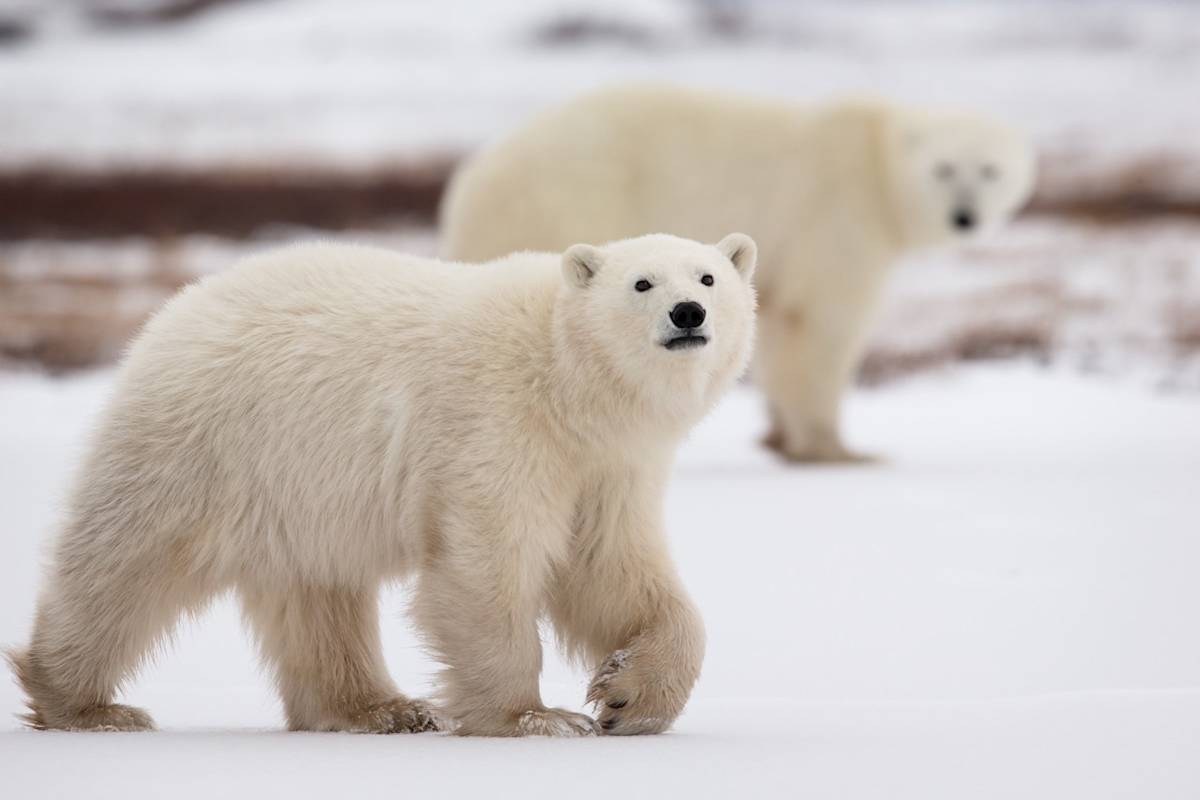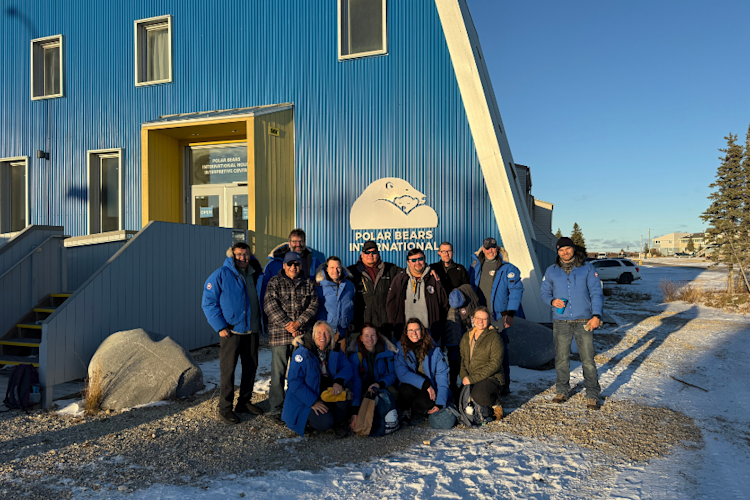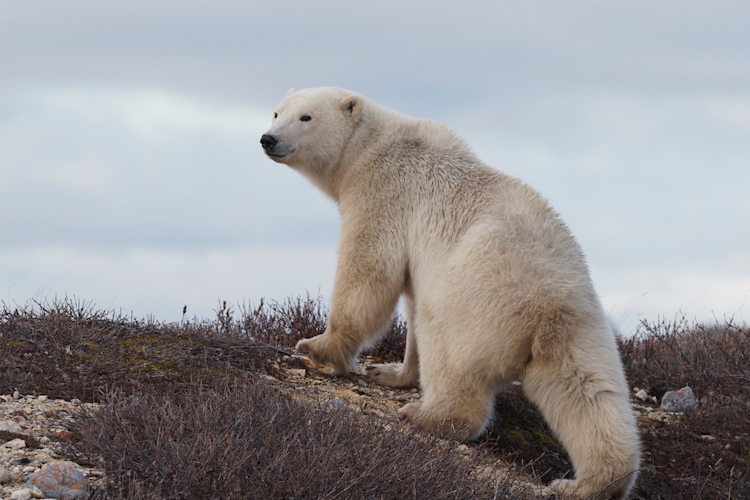As we work to keep people and polar bears safe during unplanned encounters in the North, my colleagues and I were surprised to run into resistance to using bear spray, even though it’s a highly effective deterrent. In fact, carrying bear spray in polar bear country may well save your life.
While bear spray is widely accepted and used across Western North America for those living, working and recreating in brown bear country, its availability for use in polar bear country is limited. Across the polar bear’s range, we noted three primary reasons for the lack of acceptance: a belief that it would be ineffective on polar bears, a belief that it would not be effective in the cold, and a belief that frequently windy conditions would limit its utility. In some jurisdictions, these widespread beliefs have led to laws that restrict the availability of bear spray.
In an effort to better inform both policy and the public, I worked with members of the Polar Bear Range States Conflict Working Group to address these concerns. The first of two papers to result from this effort was led by Dr. Tom Smith of Brigham Young University. Published in the Journal of Wildlife Management, it examines the effects of temperature, wind, canister age, and repeated use on spray performance. A second paper will follow that looks specifically at nearly 20 incidents across the Arctic where bear spray was actually used to deter polar bears. The takeaway from both: bear spray is an important and effective deterrence tool in all areas where bears occur, even if it is windy or cold.
Specifically, we tested bear spray in temperatures ranging from -23C to +25 C. In all cases we achieved a spray distance of four meters or more. We also tested wind speed up to to 10 meters per second. Even when used in the highest winds, coming directly towards the nozzle, the spray still reached 2 meters (the average distance of spray deployment in real incidents). When looking at repeated use, or test firing of bear spray, we found that approximately 50% of canister head pressure is lost during the first 1 second of spray use or greater. Finally, when examining the effect of time, the canisters lost about 1 gram of propellant for every year of age, supporting manufacturers' 4-year expiration dates. Based on the results of this paper, we recommend these guidelines:
Do not test‐fire cans intended for use in the field
Keep canisters warm when in the cold, tucking them inside a parka or sleeping bag
Retire canisters of bear spray when they’re four years old or more
Research into bear's spray's effectiveness is part of Polar Bears Internationals' ongoing efforts to reduce conflict between polar bears and people, with a goal of keeping both safe.

















